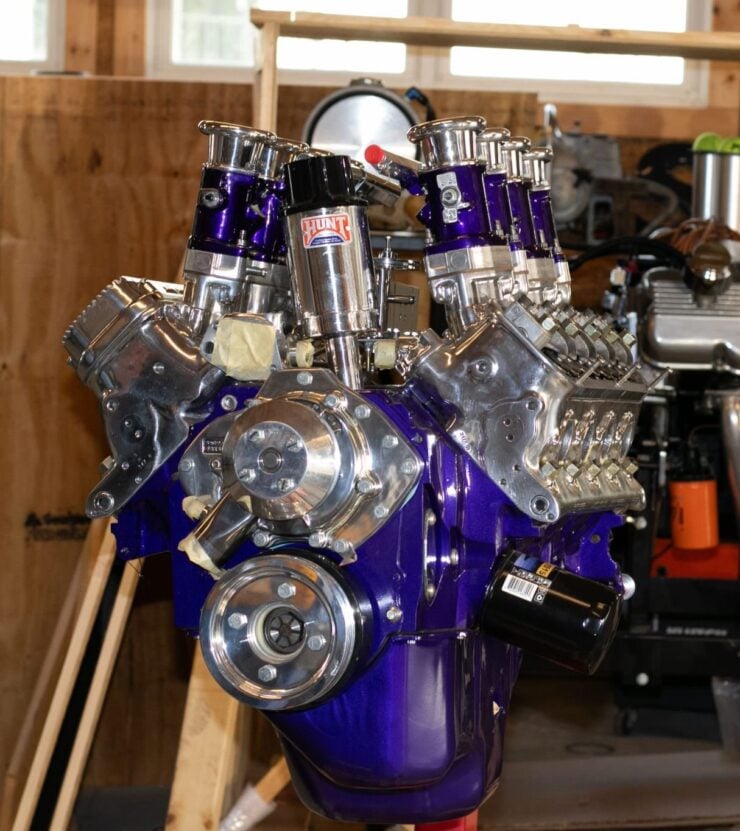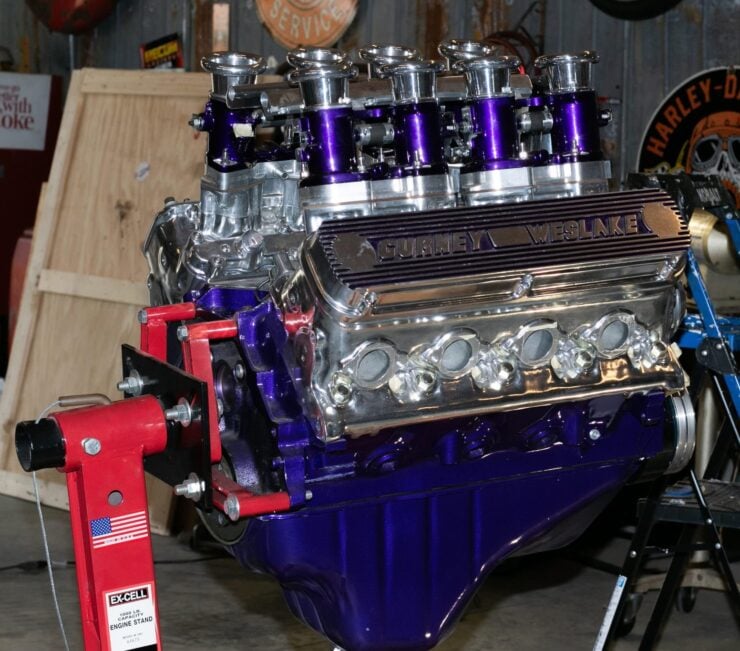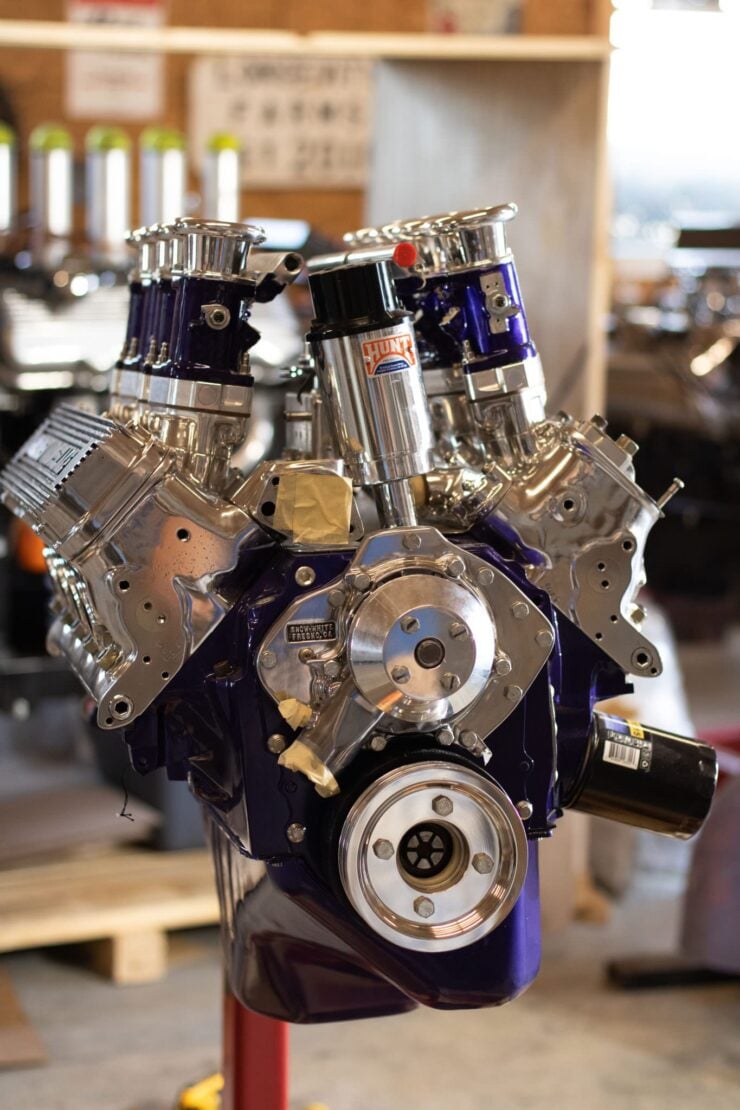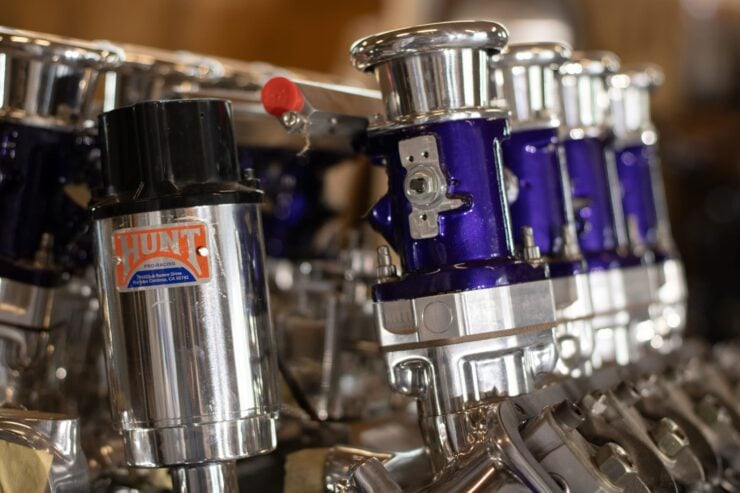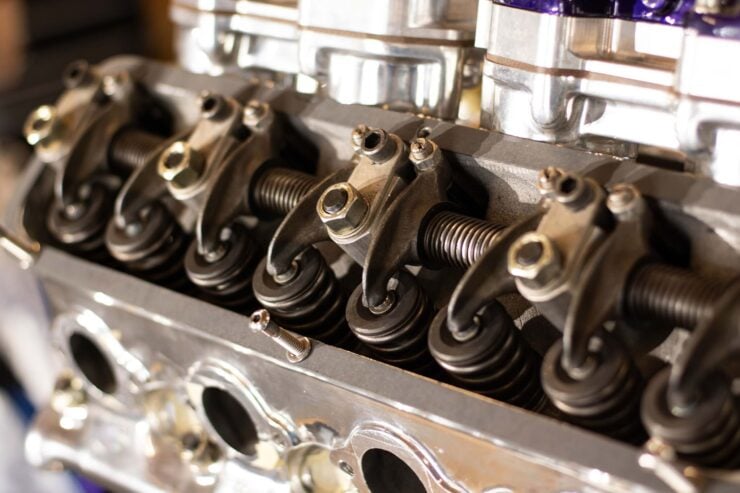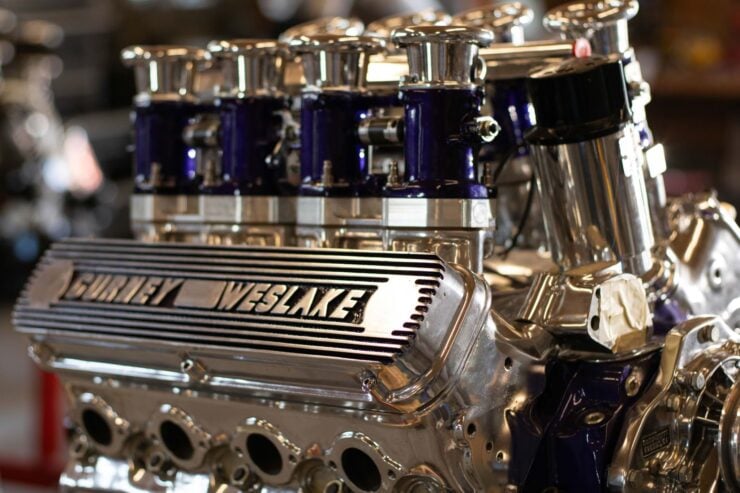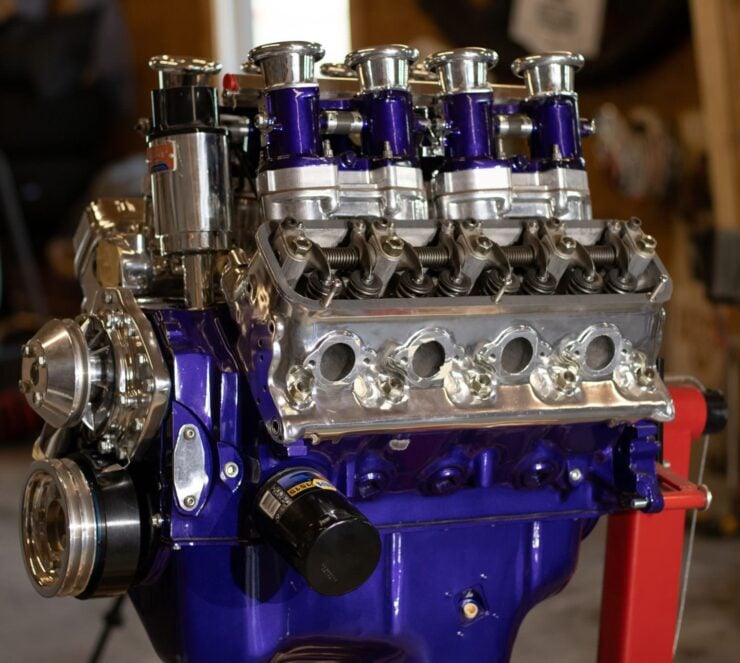This is a Ford Cleveland 351 V8 crate engine that was built by John Beck Racing Engines based out of Chico, California. It was built from the ground up as a road/race engine with TWM throttle bodies, velocity stacks, FAST electronic fuel injection, Gurney-Weslake heads, and plenty more.
Interestingly, this engine is said to originally be an Australian-cast 351 V8. The Geelong foundry in Australia built a series of Australian XE (eXperimental Engineering) racing 351 blocks for sale to racers and engine builders in the United States, they were sold through Ford’s SVO program.
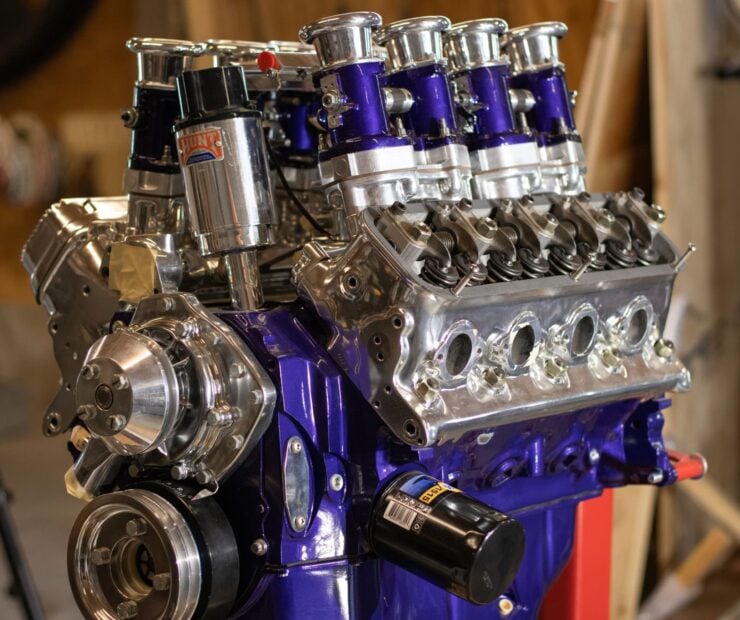

History Speedrun: The Ford Cleveland 351 V8
Ford introduced the 351 Cleveland V8 in 1969 for the 1970 model year, with the engine named after the Cleveland Engine Plant #2 in Brook Park, Ohio, where it was made. It formed part of Ford’s 335 engine family, and it was originally developed to supplement 351 Windsor V8 production which was taking place at Ford’s Windsor Engine Plant #1 in Windsor, Ontario, Canada.
Demand for the 351 Windsor, also called the 351W for the sake of simplicity, was too high for the plant to meet, so Ford planned to build a version of the engine in the United States. During the development of the new engine, the design changed so much that only a small number of parts are actually interchangeable between the two V8s, despite their similar starting points.
That said, both engines do have the same engine mounts, bell housing bolt patterns, and bore spacing.
The design of the 351C was marked by more performance-oriented engineering choices, notably its canted-valve cylinder heads and larger intake and exhaust ports to improve airflow into and out of the cylinders.
The Two “V” Versions
These design choices significantly improved performance, allowing for higher output without a meaningful increase in displacement. Ford produced two distinct variants of the 351C to suit different market requirement. The “2V” (two-venturi) version catered to everyday road cars, SUVs, and pickup trucks, delivering torque at lower rpms.



The “4V” (four-venturi) version had larger ports, valves, and a performance-oriented camshaft designed specifically for maximum output at higher revs. Enthusiasts and racers quickly embraced the 4V version for its power output and its ability to perform reliably, even under race conditions.
The High-Performance Production 351Cs
Among the high-performance variants, the 1971 debut of the Boss 351 would see the arrival of one of the highest-performance versions of the engine that would be built for a production car. Available exclusively in the Ford Mustang Boss 351, it featured mechanical (solid) lifters, a high-performance camshaft, a special intake manifold, and a four-barrel carburetor.
This engine was rated at 330 bhp, and was considered among the strongest factory-produced small-block engines of its time. Another well-known, high-performance variant was the 351 Cobra Jet, which debuted in 1971, distinguished by a slightly lower compression ratio that was chosen to balance its performance with emerging federally-mandated emissions standards.
Beyond its reputation in production vehicles, the 351 Cleveland would go on to enjoy significant successes in the world of racing, across various motorsport genres. In drag racing, the engine became a popular choice in Pro Stock categories, adopted notably by legendary racers such as Don Nicholson, who demonstrated the engine’s high-rpm potential.
The 351C also had significant success in NASCAR, where its combination of toughness and high-end power delivery helped Ford vehicles consistently achieve competitive results throughout the early 1970s.



Internationally, the engine’s reputation was bolstered by its racing triumphs in Australia, particularly in the Australian Touring Car Championship (ATCC) and endurance events such as the Bathurst 500. The Ford Falcon GTHO Phase III, powered by a 351 Cleveland, famously won the 1971 Bathurst 500.
The Falcon GTHO Phase III’s dominance was so pronounced that Australian motoring press and enthusiasts regarded it as one of the world’s fastest four-door sedans of the era, if not the fastest outright.
The Story Ends (But Continues In Australia)
Production of the 351 Cleveland engine in the United States came to an end in 1974, primarily driven by stringent emissions regulations and the 1973 Oil Crisis, which shifted industry priorities toward fuel economy and emissions compliance.
The engine did enjoy an extended production run in Australia however, where Ford continued manufacturing it until 1982, with some stock still being installed into vehicles as late as 1984. As a result of this, some special castings of 351C engines were made in Australia specifically for the US market through the Ford SVO program.
The Ford Cleveland 351 V8 Crate Engine Shown Here
The engine you see here is a road/race crate engine, it was built by John Beck Racing Engines in California and it’s fitted with a slew of high-performance parts including a set of highly desirable aluminum heads.
Those heads are said to be NOS (new old stock) MK IV Gurney-Weslake heads, developed for racing with high-flow ports, and now considered highly desirable by those who want to upgrade their 351 Cleveland.
The seller notes that the engine has a Castillo-prepared 4MA crankshaft with Chevrolet journals, Carrillo connecting rods, and forged Ross 9.5:1-compression pistons. Those cylinder head are topped with finned valve covers carrying Gurney-Weslake branding, and the engine has a Joe Hunt distributor and magneto.
This 351C also has a Snow-White water pump conversion kit, a Clay Smith oil pump, and TWM throttle bodies with velocity stacks. It has a Fuel Air Spark Technology (FAST) XFI electronic fuel-injection system and comes with the module.
The engine is now being offered for sale out of West End, North Carolina on Bring a Trailer, and it will come in a large shipping crate to simplify transport and logistics. If you’d like to read more about it or place a bid you can visit the listing here.
Images courtesy of Bring a Trailer
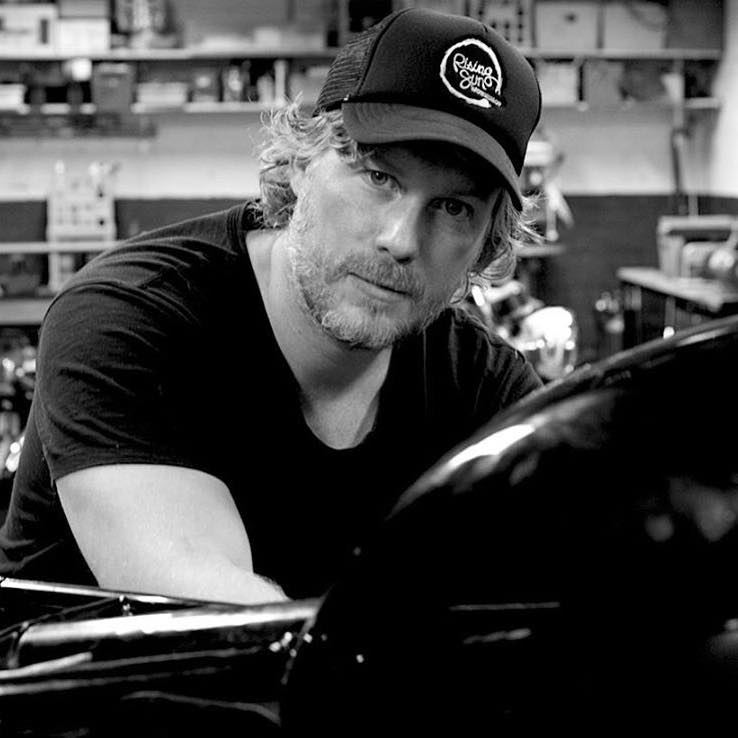

Articles that Ben has written have been covered on CNN, Popular Mechanics, Smithsonian Magazine, Road & Track Magazine, the official Pinterest blog, the official eBay Motors blog, BuzzFeed, Autoweek Magazine, Wired Magazine, Autoblog, Gear Patrol, Jalopnik, The Verge, and many more.
Silodrome was founded by Ben back in 2010, in the years since the site has grown to become a world leader in the alternative and vintage motoring sector, with well over a million monthly readers from around the world and many hundreds of thousands of followers on social media.



